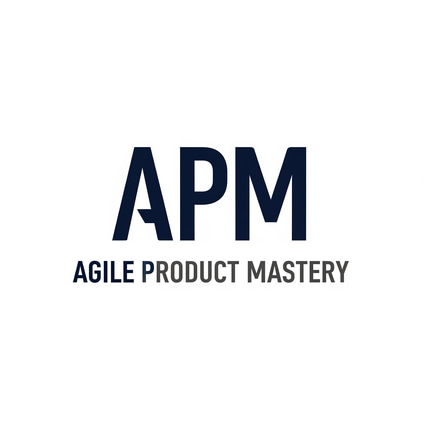Technical Fluency for Business Product Owners: Why It Matters & How to Get It
Bridge the tech gap! This guide for business Product Owners explains why technical fluency is crucial and offers actionable steps to understand development cycles, APIs, and data.
Written by: Matt Gregory - Founder Agile Product Mastery
6/11/20254 min read


Introduction: The Missing Link in Business Product Ownership
When I made the transition from a business subject matter expert to product owner I was worried that I couldn’t be able to understand the tech lingo.
My background as a Business Product Owner (BPO) allowed me to bring a customer-centric focus, alignment among stakeholders, and domain expertise to the table. But technical fluency is an often-overlooked talent that might determine a BPOs impact.
You don’t need to be a software engineer. It is critical, though, to know how technology functions, as well as how your team builds, integrates, and deploys. In this blog, we will discuss the importance of technical fluency for Product Owners who focus on business, and we will provide practical steps to help you become tech-savvy and lead effectively in modern product environments.
Why Technical Fluency Matters for Business Product Owners
1. You’ll Make Better Decisions, Faster
There are frequently technical trade-offs involved in prioritising backlog items. Without a basic understanding of development complexity, system dependencies, or integration risks, a BPO may unintentionally prioritise the wrong thing. Or worse, cause delays due to unrealistic expectations.
Example: Imagine choosing to develop a new report feature, thinking it’s a “quick win,” without knowing it requires new API endpoints, database changes, and complex data joins. A technically fluent PO would spot this and question the effort vs. value early.
2. You Gain Credibility with Tech Teams
Product Owners who ask thoughtful technical questions and show an understanding of delivery challenges earn faster buy-in from developers, testers, and architects. They’re seen as collaborators, not bottlenecks.
Reality check: Teams don’t expect you to write code, but they appreciate when you get what they do and communicate in their language.
3. You’re a Better Bridge Between Business and IT
One of the biggest value-adds of a BPO is translating business needs into viable solutions. If you understand how APIs work, or what a CI/ CD pipeline is, you can translate business needs into workable user stories with less friction.
Strategic benefit: This fluency reduces reliance on middle interpreters (like Business Analysts) and shortens delivery cycles.
What Technical Fluency Looks Like (for a BPO)
You don’t need a Computer Science degree. But a solid baseline of the following areas will elevate your product game:
1. Understanding the Software Development Lifecycle (SDLC)
Know the key phases: requirements, design, development, testing, deployment, maintenance
Be able to answer:
What happens in a sprint after we finalise the backlog?
How does code move from a developer’s laptop to production?
2. Basic API Literacy
Know what an API is, how systems talk to each other, and the difference between REST and SOAP
Understand:
How your product integrates with other systems
What an API request/response looks like (e.g. JSON)
Common API errors and what they mean
3. Data Awareness
Know the basics of databases, data flows, and reporting layers.
Can you:
Explain where the data your product uses comes from?
Flag if there are data privacy or security implications?
Support the team in defining meaningful metrics and reporting outputs?
4. Cloud, DevOps, and Environments
At a high level, understand:
What cloud deployment means (AWS, Azure, GCP)
What environments are (dev, test, UAT, prod)
What a deployment pipeline involves
How to Build Technical Fluency: A Playbook for BPOs
1. Ask Questions (Without Fear)
Start by asking your tech lead or solution architect to explain system architecture or how features get built. Frame it as wanting to support the team more effectively.
Great starter questions:
What happens after I approve a story?
What causes defects to appear in UAT but not in dev?
How does data get from our source system into this dashboard?
2. Join Technical Ceremonies
Attend architecture forums, backlog refinement with dev leads, or even code reviews (as a listener). Absorbing the language and logic will fast-track your learning.
Pro tip: Always ask for a diagram. Tech people love them, and they demystify complexity.
3. Use Online Microlearning Platforms
Short, sharp technical courses can fit easily into your schedule. Great platforms include:
LinkedIn Learning – for SDLC, Agile DevOps, APIs
Frontend Masters or Egghead.io – for UI/UX basics
4. Practice by Writing Better Stories
Technical fluency shows up in how you write user stories and acceptance criteria. Practice breaking down:
Frontend vs backend work
What integration points are impacted
How to verify data-related features
Tip: Involve your QA in reviewing ACs. Their questions will often surface missing tech context.
5. Pair with Your Dev Lead or BA
Ask to shadow a dev lead or sit in on technical grooming sessions. Treat them like mentors—they’ll usually love teaching someone who’s genuinely curious.
6. Stay Current (without Overwhelming Yourself)
Subscribe to one or two trusted sources like:
Tech blogs from Atlassian, ThoughtWorks, or Martin Fowler
Weekly newsletters like The Pragmatic Engineer , Inside Dev or our blog here :)
Common Pitfalls to Avoid
Trying to Sound Like a Developer: Tech teams value clarity and curiosity more than jargon. If you don’t know something, ask. If you’re unsure, paraphrase back and confirm.
Getting Stuck in “I’m not technical”: This mindset blocks growth. You’re not trying to become a developer—just become fluent enough to lead them well.
Ignoring Integration & Data Layers: Business POs often focus on the UI or customer-facing aspects. But value often depends on what’s happening behind the scenes—data movement, API integrations, background jobs. Learn to see under the hood.
Final Thoughts: It’s Not Optional Anymore
In today’s cross-functional world, the best Business Product Owners are not just domain experts…they’re enablers of delivery. That means understanding how technology is built, deployed, and maintained.
For me, technical fluency will help you:
Prioritise wisely
Communicate clearly
Collaborate deeply
Ship smarter
And most of all...it empowers you to lead from the front, not just manage from the sidelines.
Next Steps for You
Pick one technical topic from this blog you don’t understand and commit 30 minutes to learning it this week.
Schedule a session with your tech lead to walk through your current system architecture.
Bookmark this blog and share it with other BPOs in your network, it’s time we stop fearing the tech gap and start bridging it.
Want to learn more, join our community here
© Agile Product Mastery — Build a career that scales. Not one that burns out.
Powered by Baltimore Advisory Pty Ltd — ABN 97 678 312 475 — All rights reserved
Follow us on LinkedIn
